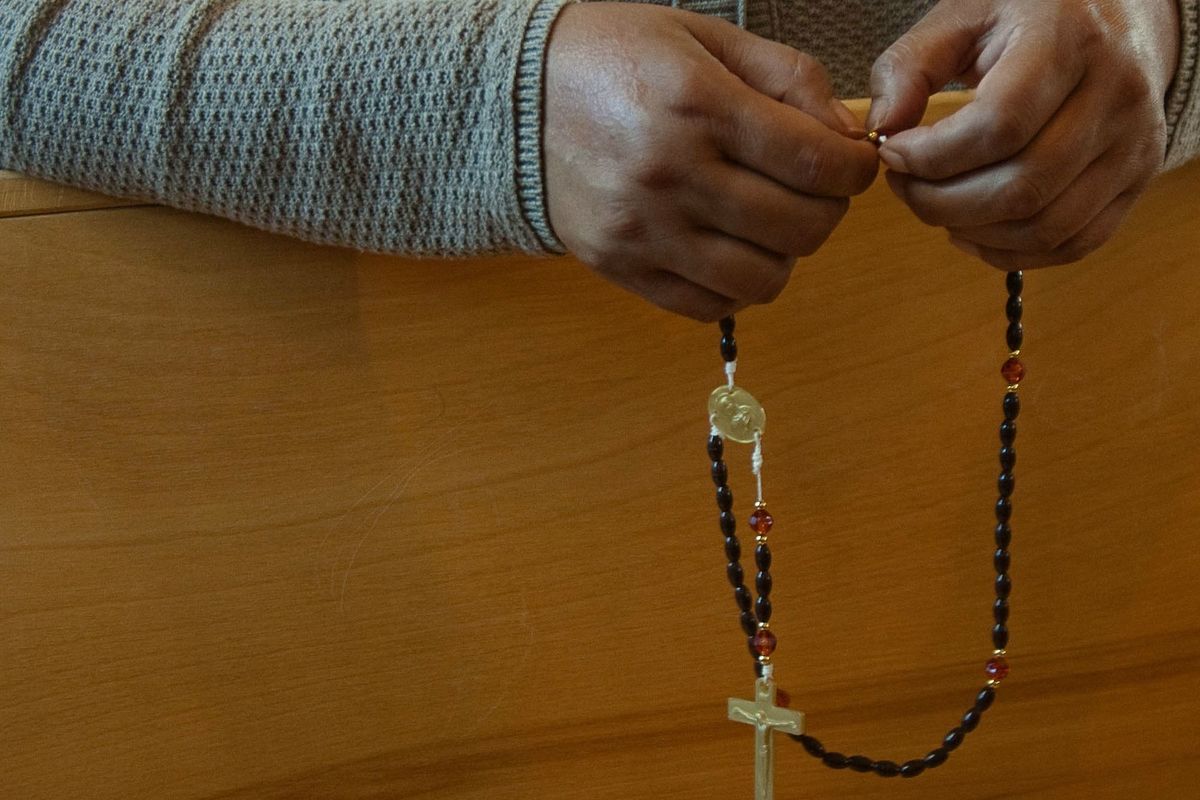Our parish uses the Edge program for our middle school religious education. Before our first class began, our coordinator asked me to lead prayer at the end of each monthly gathering. When I asked her if there was a specific type of prayer she was hoping I would lead, she thought that perhaps it would be nice to introduce the Rosary to the middle school students. Now, before you think that we prayed the whole Rosary before each class, I will tell you that we decided that a single decade of the Rosary would be stretching the limits of middle school students’ abilities to be quiet, still, and prayerful.
Why pray the Rosary with middle school students? First of all, many of our students do not have much experience with traditional prayers of the Church; sadly, that includes experiences of the Mass. We wanted to end our classes in a spirit of prayer that would send students home refreshed, renewed, and filled with hope in the Lord. Since Mary is the Mother of our Lord, whose “role in the Church is inseparable from her union with Christ and flows directly from it,” and since she is also our Mother whose prayers adhere “to the plan of the Father,” we—the Church—are “sustained by the prayer of Mary and united with it in hope (CCC §§964, 2679). Why wouldn’t we want to introduce this form of prayer to our students? Besides our beautiful beliefs of Mary’s role in the Church and our own lives, which few of the 150 students probably grasped, there were practical reasons for praying a decade of the Rosary each month with the students.
Middle School students do not often find their own time for quite, reflective prayer. Incorporating prayer into our class time seemed important, not only because it is one of the six tasks of catechesis, but because it is where we experience our personal and communal relationship with God. “The tradition of Christian prayer is one of the ways in which the tradition of faith takes shape and grows . . . ” (CCC §2651). If prayer is so important, and we are going to incorporate it into our class, we need to think about time, environment, and the development of the students in learning to practice prayer. Most middle school students need structure and have difficulty sitting quietly for long periods of time. However, saying a “quick” prayer would not give them a chance to settle and be refreshed at the end of a class. By saying a decade of the Rosary, they have structure with the format of the prayer with time to settle and reflect on a different mystery each month. Many students also learn and have positive experiences if they are able to have something to touch (Gardner’s Theory of Multiple Intelligences). Rosary beads are a tangible sacramental to help focus the movement and rhythm of prayer. Of course we had to explain the need to be reverent during this prayer and while using the Rosary beads – to the surprise of the students, the Rosary beads are NOT a “Catholic Necklace.”
When it came time to introduce the Rosary to the students it was a bit more difficult than I anticipated. I had the words, the PowerPoint visual aid, and the passion; however, getting 150 middle school students to listen with open hearts and minds after 2 hours of lessons and activities can be a challenge. The students sitting in front of the room were the most receptive. Luckily, each month, the students in the front of the room change. I made sure that each gathering I re-emphasized the importance of prayer and the reason we were praying the Rosary before we began our prayer. I also started walking from table to table (we have 10) at each Hail Mary and I asked that table to lead the prayer with me. This gave responsibility to the students at each table and helped them to concentrate on the prayer more fully.
Since this is the first year we incorporated the Rosary into our class time, I have been reflecting on ways to improve their prayer experience next year. Perhaps we will spend more time during the first class talking about prayer and what their personal experiences are. Then, I might have each class come up with a reflection to lead on the different mysteries to help make the prayer more meaningful to them. And while we continue to reflect on ways to guide them in prayer, we will rely on the working of the Holy Spirit, who through our prayer, unites us to Christ.
